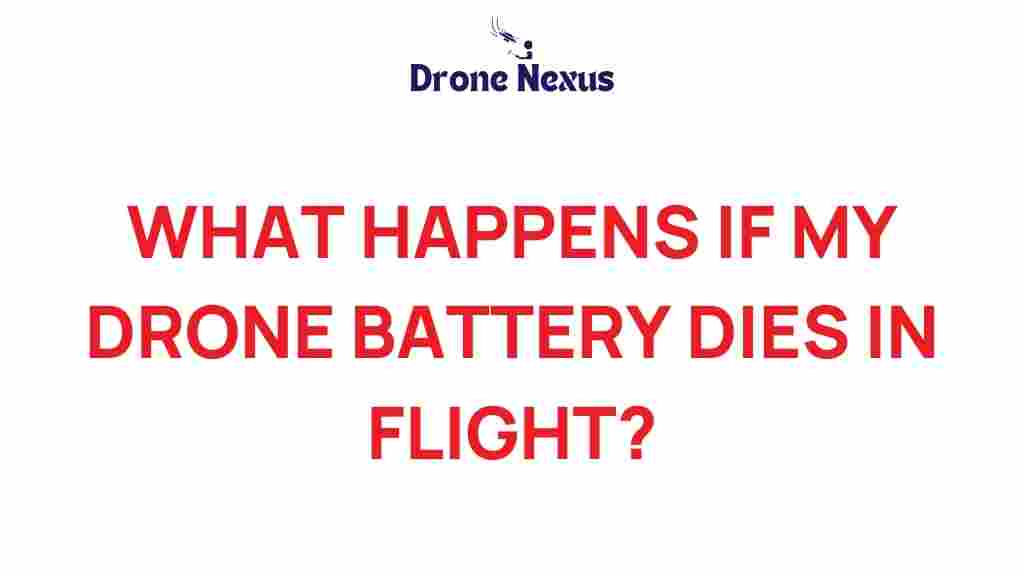What Happens When Your Drone Battery Dies Mid-Flight?
In the exciting world of drone flying, few things are as exhilarating as soaring through the skies, capturing stunning aerial footage, or exploring new landscapes. However, one of the most critical aspects of maintaining your drone’s performance is ensuring its drone battery is in top condition. But what happens when your drone battery dies mid-flight? This article will delve into the implications of a drained battery, how to handle the situation, and tips to prevent it from happening in the first place.
Understanding Drone Battery Life
Before we explore the consequences of a depleted drone battery, it is essential to understand the factors that affect battery life. The capacity and performance of a drone battery can vary based on a variety of factors, including:
- Battery Type: Lithium-polymer (LiPo) batteries are the most common in drones, offering high energy density and lightweight properties.
- Flight Conditions: Windy conditions, temperature extremes, and altitude can all impact battery performance.
- Payload: The weight of the drone and any additional equipment or cameras can significantly affect flight time.
- Flight Style: Aggressive maneuvers and high-speed flying can drain the battery faster than gentle cruising.
What Happens When Your Drone Battery Dies Mid-Flight?
When your drone battery runs out of power during flight, the consequences can range from minor inconveniences to potentially dangerous situations. Here’s what typically occurs:
1. Automatic Return to Home (RTH)
Many modern drones are equipped with safety features that activate when the battery level becomes critically low. One of the most common features is the Return to Home (RTH) function. When the battery reaches a specific threshold, the drone will automatically return to its takeoff point. However, this feature is not foolproof and can be hindered by:
- Loss of GPS signal
- Obstructions in the flight path
- Insufficient battery to complete the return journey
2. Loss of Control
If the battery dies completely, the drone will lose power and control. Depending on how high the drone is at that moment, it may begin to descend rapidly. This can lead to:
- Damage to the drone
- Potential hazards to people and property below
- Loss of valuable equipment or footage
3. Emergency Landing
Some drones have emergency landing protocols that activate when the battery is critically low. This feature allows the drone to land safely in a controlled manner, reducing the risk of damage. However, not all drones are equipped with this feature, and its effectiveness can vary.
What to Do When Your Drone Battery Dies Mid-Flight
If you find yourself in the unfortunate situation of having your drone battery die mid-flight, follow these steps to respond appropriately:
1. Stay Calm
Panicking will not help the situation. Take a deep breath and assess your surroundings.
2. Monitor the Drone’s Descent
Keep your eyes on the drone as it descends. This will help you track its path and potentially identify where it lands.
3. Prepare for Recovery
If you manage to regain control or if the drone’s RTH feature activates, prepare to recover the drone at its landing spot. If the drone does not return automatically, you may need to manually search for it.
Troubleshooting Tips to Prevent Battery Failure
- Regularly Check Battery Health: Monitor the health of your drone battery and replace it if you notice swelling, damage, or decreased performance.
- Monitor Battery Levels: Always keep an eye on the battery percentage during flight. Many drones provide real-time battery updates through their app or controller.
- Plan Your Flight: Before taking off, plan your flight route and consider the distance. Ensure that you have enough battery life for the entire journey, including the return trip.
- Avoid Extreme Conditions: Try to fly in moderate weather conditions. Extreme temperatures and high winds can drain your battery faster.
- Use the Right Settings: Adjust the drone settings to optimize battery usage. For example, lower camera settings during video recording can help conserve battery life.
Conclusion
Understanding the implications of a dying drone battery mid-flight is essential for any drone enthusiast. While many modern drones come with safety features like RTH, there are no guarantees that they will always work perfectly. By taking proactive steps to monitor your battery health and plan your flights carefully, you can minimize the risk of encountering a dead battery mid-air.
If you want to learn more about drone maintenance and safety tips, check out this comprehensive guide here. Additionally, for a deeper understanding of drone technology and innovations, you can explore resources from expert websites like DroneDJ.
By staying informed and prepared, you can enjoy your drone flying experience without the anxiety of unexpected battery failures.
This article is in the category Safety and created by DroneNexus Team
